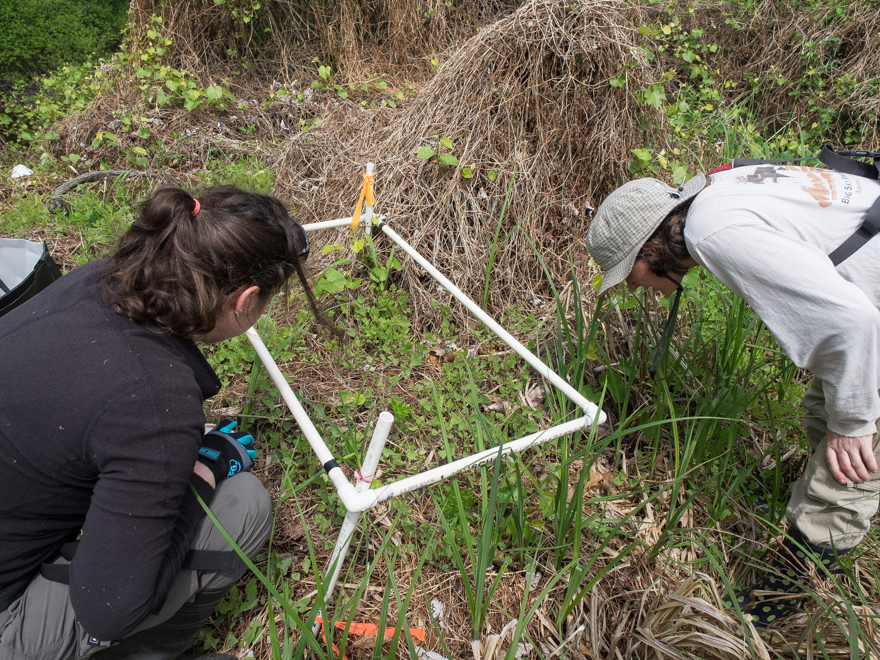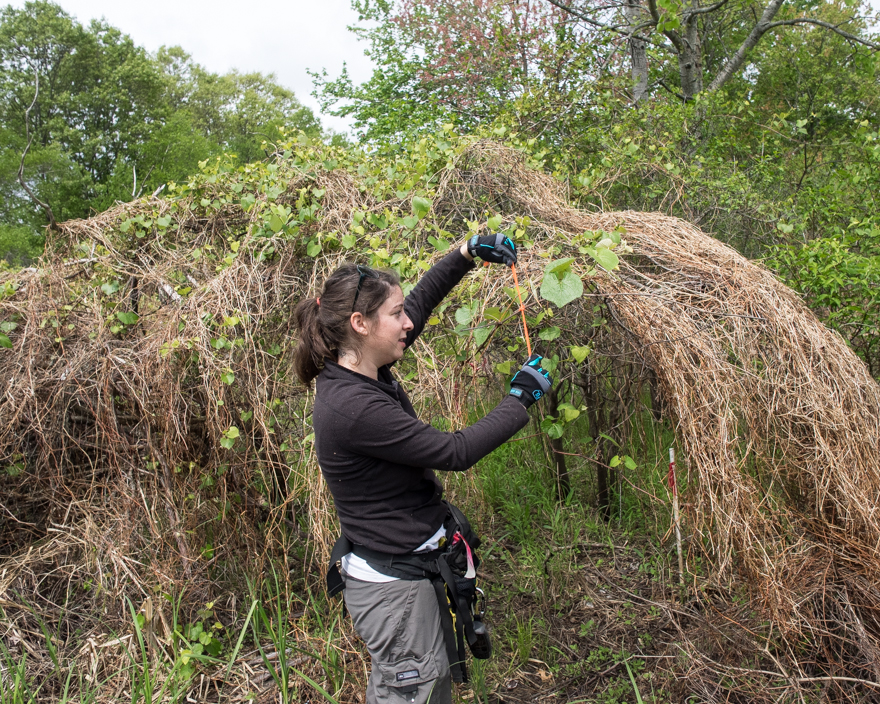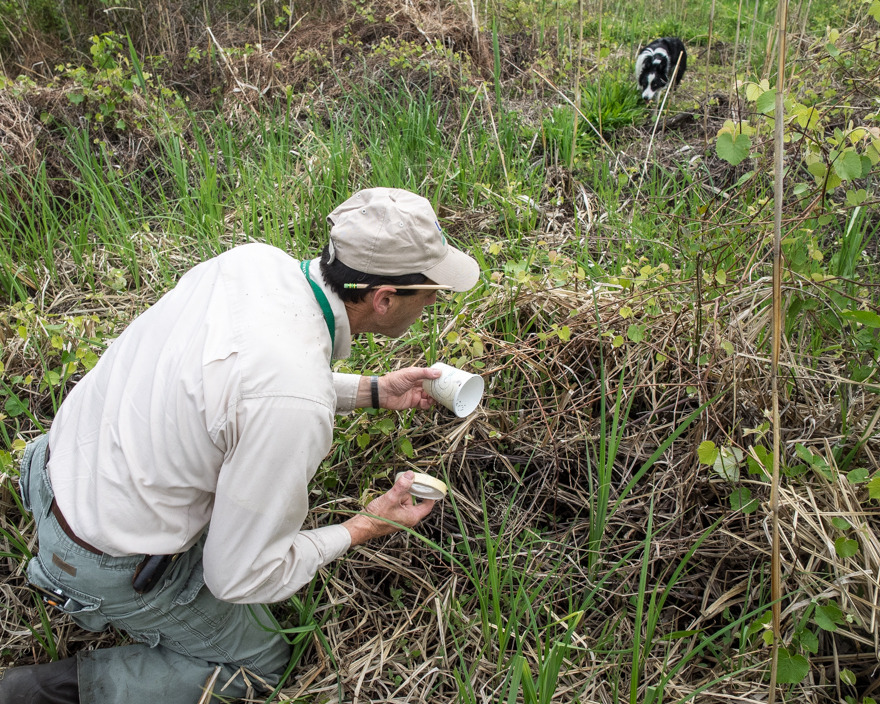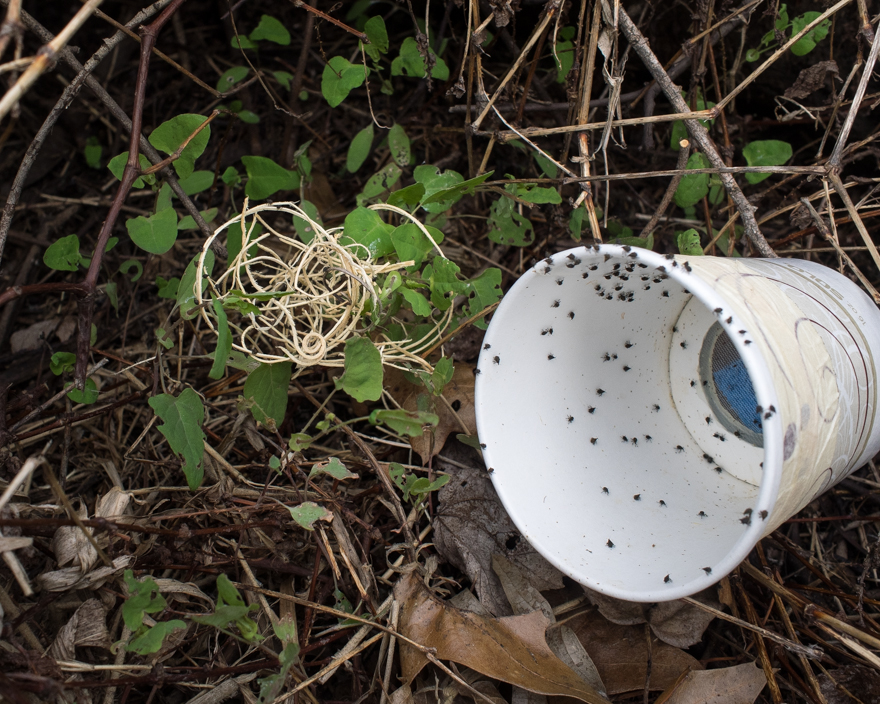Invasive species seem to have (forgive me) invaded the public consciousness lately. Asian carp are poised to invade the Great Lakes, while local officials trumpet their successful battle against the Asian long-horned beetle in Boston. My tendency to skepticism tempers my response to such news, good or bad; I’m reluctant to believe that the sky is falling, and in cases where it really is, I’m dubious that humans can do much about it. I also try to remain open to being wrong, so I was intrigued when my friend Jenn Forman-Orth, an invasive plant ecologist at the Massachusetts Department of Agricultural Resources, invited me to a “biocontrol release” aimed at combatting an invasive plant called mile-a-minute weed. Jenn, along with Ale Echandi of the Department of Conservation and Recreation, has had an eye on mile-a-minute weed (Persicaria perfoliata) since it was discovered in the state in 2004, and been involved in efforts to control it since 2010. I’d heard about the plant’s existence in Fowl Meadow, one of my favorite parts of the Blue Hills Reservation, but had never seen it, and didn’t have any sense of how significant a threat it posed to local ecosystems. So with a great deal of curiosity, I met Sarah Grubin, a biologist in Jenn’s office, Ken Divito from the USDA, and Steph Radner, a local naturalist who has been following the incursion of mile-a-minute weed. I quickly learned that MAM is not hard to find. It’s a very distinctive plant, and where it grows, it tends to take over. 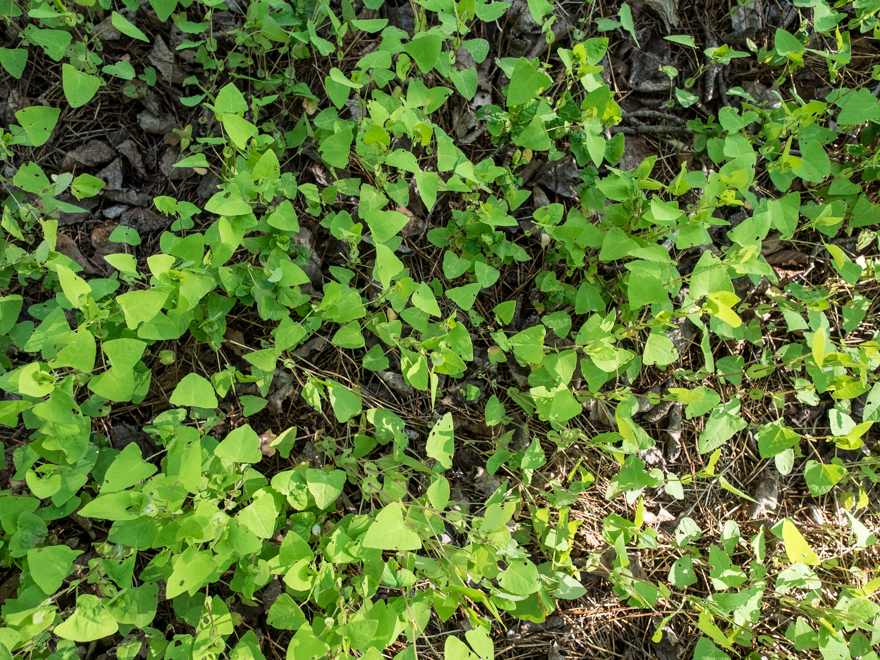 It has triangular leaves, rearward-pointing spines, and ocrea, little discs encircling the stems.
It has triangular leaves, rearward-pointing spines, and ocrea, little discs encircling the stems. 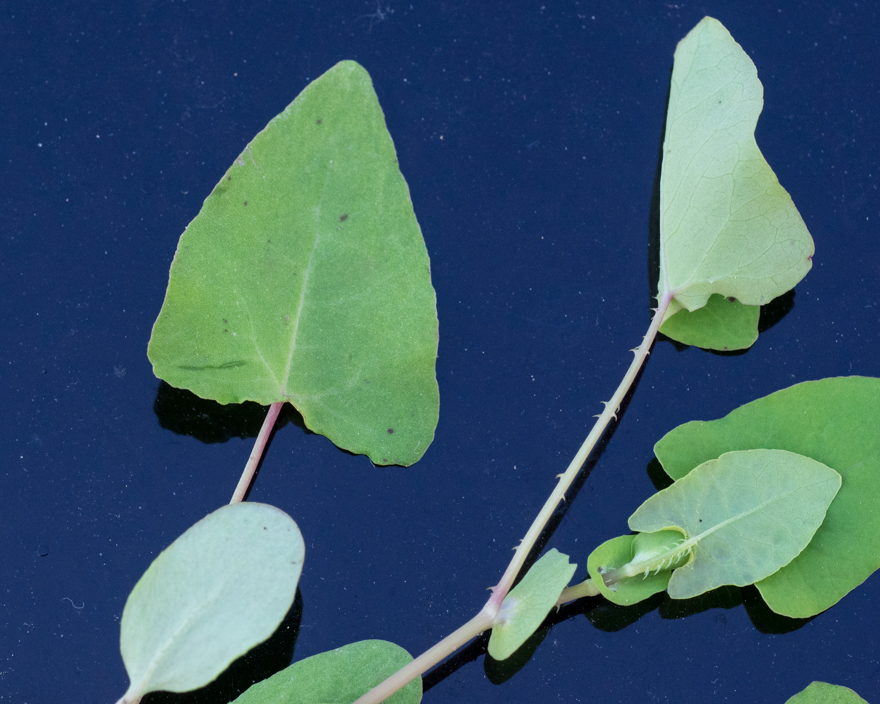
 And while this year’s crop — it’s an annual — was just starting to grow, evidence of the MAM vines from previous years covered much of the terrain.
And while this year’s crop — it’s an annual — was just starting to grow, evidence of the MAM vines from previous years covered much of the terrain. 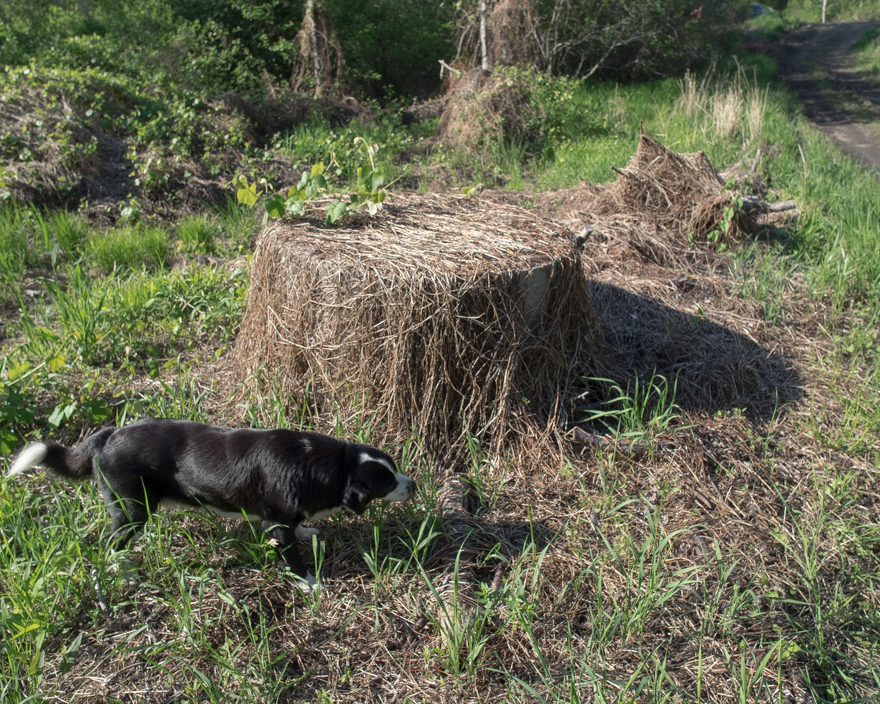 It seems that mile-a-minute weed was unintentionally introduced to the US in the 1930s, arriving at a nursery in York, PA with some rhododendrons from Japan, and gradually spreading through much of the East since then. It can grow up to 6cm in one day — not quite a mile, but pretty fast nonetheless — and it tends to climb over everything in its path, aided by its barbs, seeking full sun exposure. It propagates from seeds, which are spread both by birds and by flowing water, as the seeds can float for many days. From what I can gather, mile-a-minute weed was already well-established in Fowl Meadow when it was discovered in 2004 by folks from the New England Wildflower Society and is now a dominant plant in hundreds of acres. Fowl Meadow is home to a number of threatened plants that share habitat with mile-a-minute weed, and it’s easy to see how they could get crowded out by this invasive; I was becoming convinced that MAM is a real problem.
It seems that mile-a-minute weed was unintentionally introduced to the US in the 1930s, arriving at a nursery in York, PA with some rhododendrons from Japan, and gradually spreading through much of the East since then. It can grow up to 6cm in one day — not quite a mile, but pretty fast nonetheless — and it tends to climb over everything in its path, aided by its barbs, seeking full sun exposure. It propagates from seeds, which are spread both by birds and by flowing water, as the seeds can float for many days. From what I can gather, mile-a-minute weed was already well-established in Fowl Meadow when it was discovered in 2004 by folks from the New England Wildflower Society and is now a dominant plant in hundreds of acres. Fowl Meadow is home to a number of threatened plants that share habitat with mile-a-minute weed, and it’s easy to see how they could get crowded out by this invasive; I was becoming convinced that MAM is a real problem.
The next question, of course, is what to do about the problem. In places where the incursion of mile-a-minute weed was discovered early in its course, mechanical control, i.e. pulling the the buggers out of the ground, has been very successful. Unlike other invasive plants that spread from a deep, extensive root system (Japanese knotweed, e.g.), MAM is fairly delicate, with shallow roots, and is easily killed. But once MAM is established, its extensive seed bank can overwhelm even dedicated volunteer pullers.
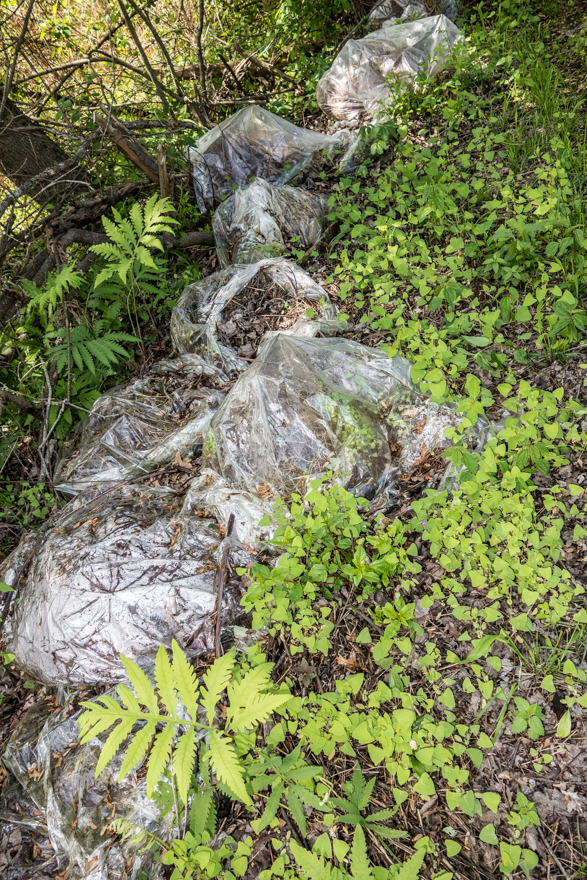
I found this evidence of last year’s control efforts surrounded by new growth of mile-a-minute weed. Some was even growing inside the plastic bags.
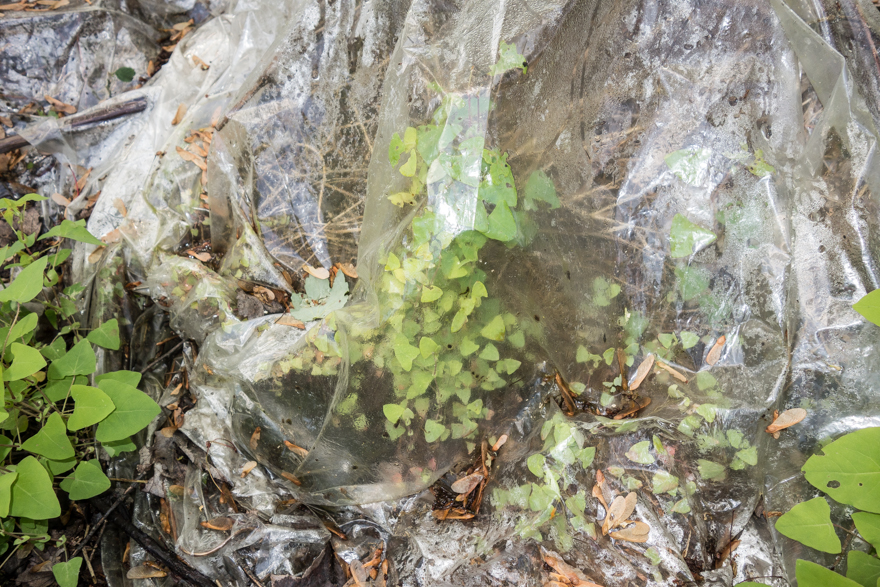
Chemical control, i.e. the application of herbicides, is another strategy to control mile-a-minute weed. Because MAM tends to grow over other plants in the ecosystem, broad-spectrum agents like Roundup, that are applied to the mature plant, tend to destroy the village to save it. I’ve heard some reports that pre-emergent herbicides, agents that prevent seed germination, can be effective and specific against MAM, but they tend to be very toxic to fish and amphibians, a no-no since much of Fowl Meadow is a river floodplain bordering on red maple swamp.
The last best option for controlling invasive organisms is so-called classical biological control — finding a critter that will do the work for us. Biological control has a mixed reputation whose negative side is exemplified by the introduction of cane toads to Australia in 1935, a story taught in every introductory ecology course. The toads were brought in to control a beetle that fed on sugar cane, but it turned out that the beetle lived high up on the cane, and the toads were unable to climb to reach it. Instead, the toads fed their voracious appetites other amphibians and reptiles, causing enormous damage to native Australian populations. To date, the cane toads’ population and range are still expanding.
The field of biological control has matured since the cane toad episode, and a great deal more effort now goes into predicting the effect of a control organism before it’s introduced. In the case of mile-a-minute weed, a weevil, Rhinoncomimus latipes, was found in 1994 in the weed’s native range in China that seemed to feed exclusively on the plant. Ten years of study followed, first in China, and then in the US, to further understand the weevil’s biology and eating habits. A good summary of the work, with many references, can be found here. Judith Hough-Goldstein of the University of Delaware, and others, found that R. latipes feeds almost exclusively on mile-a-minute weed, even when it has the opportunity to consume other closely-related plants; in addition, it can only lay its eggs in the stem of mile-a-minute weed. Researchers concluded that the likelihood that introducing the weevil to the US would lead to damage to native plants was vanishingly low, and in 2004 the USDA approved its release as a control agent for mile-a-minute weed.
A small plot of mile-a-minute weed was discovered in Fowl Meadow in 2004, but a much larger incursion was found in 2007. By 2010, Massachusetts had joined nine other states that were releasing R. latipes to control the invasive, and releases have continued each year since then. In the first year of the control effort, Ale Echandi of DCR set up control plots to monitor the extent and progression of the mile-a-minute weed incursion, and also conducted the first weevil releases. Jenn Forman-Orth’s team at MDAR took over after the first year, “after all the hard parts were done,” according to Jenn. So two weeks ago I joined the small team from MDAR and USDA (a funder of the project) that was monitoring growth of mile-a-minute weed and releasing more weevils (raised in a lab in New Jersey). We inspected a few dozen previously-established control plots, looking for MAM, other plant species, weevils, and evidence of weevil damage.
One of our biggest challenges was finding the control plots, often hidden under mounds of mile-a-minute weed vines. We tried to leave a clear trail of surveyor’s tape to help future survey workers.
At five of the plots, we released weevils, a somewhat anticlimactic endeavor, as the weevils can be slow to leave their transport containers.
You can see some damage from previously-released weevils in this plot.
And here’s the weevil up close, with millimeter marks for scale:
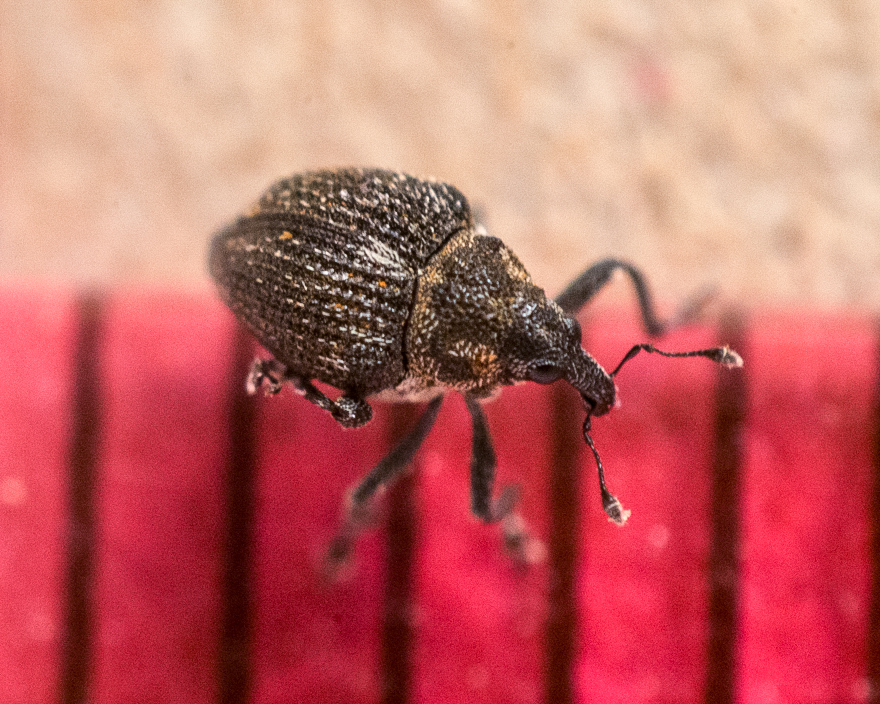
I’m now anxious to see how the story turns out. The weevil has been very successful at controlling mile-a-minute weed in other areas, but the Fowl Meadow invasion is probably the largest so far in the US, and beetle availability from the breeding facilities in New Jersey and Rhode Island is still very limited. My informal surveys of the area suggest that the invasive plant is still gaining ground, but I’m actively rooting for the Chinese weevil.
